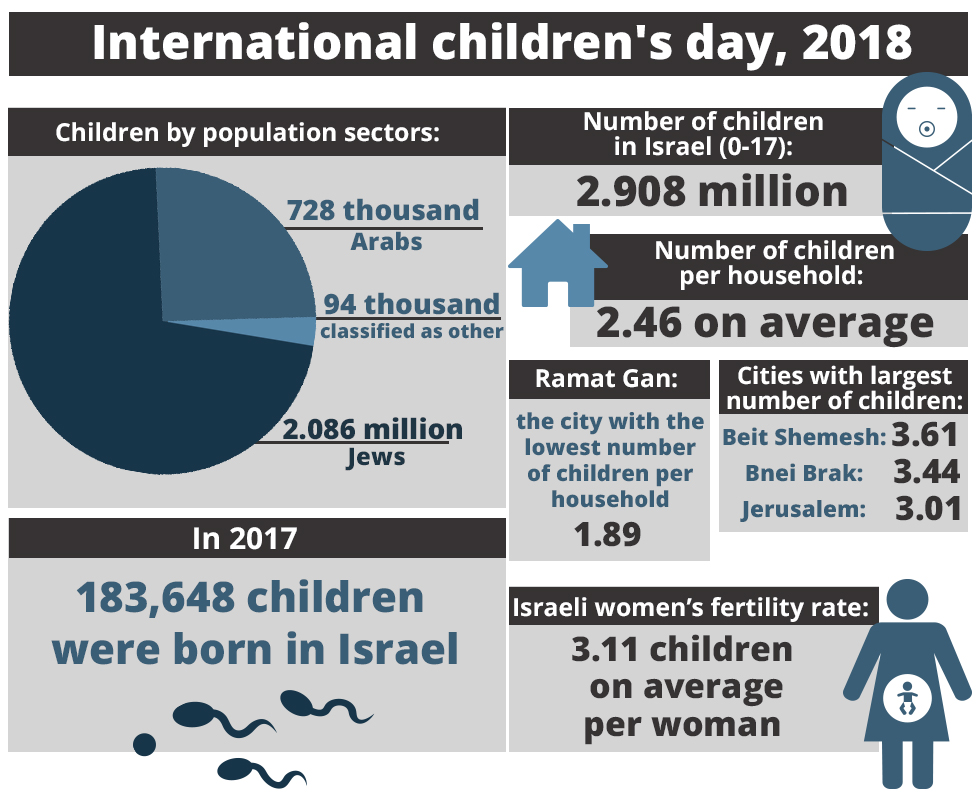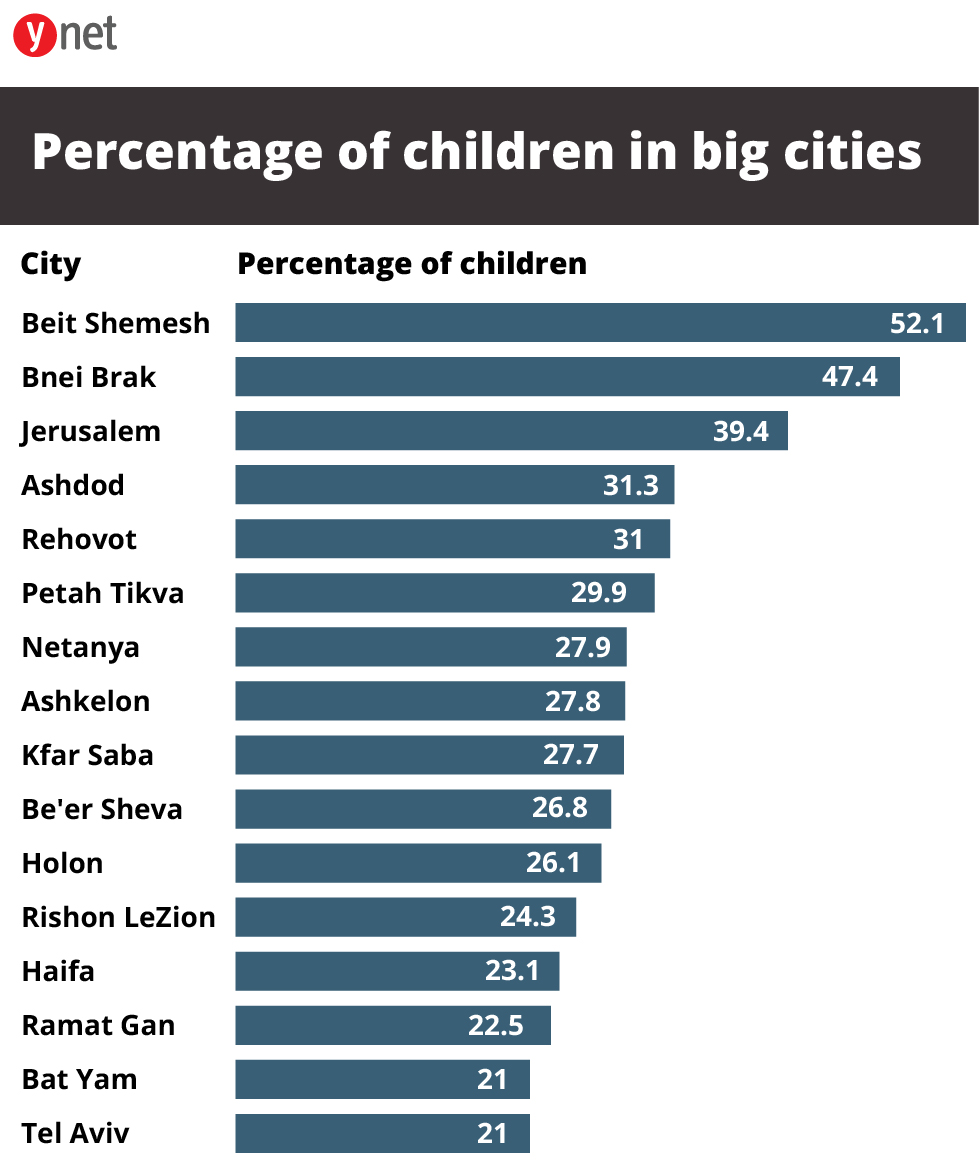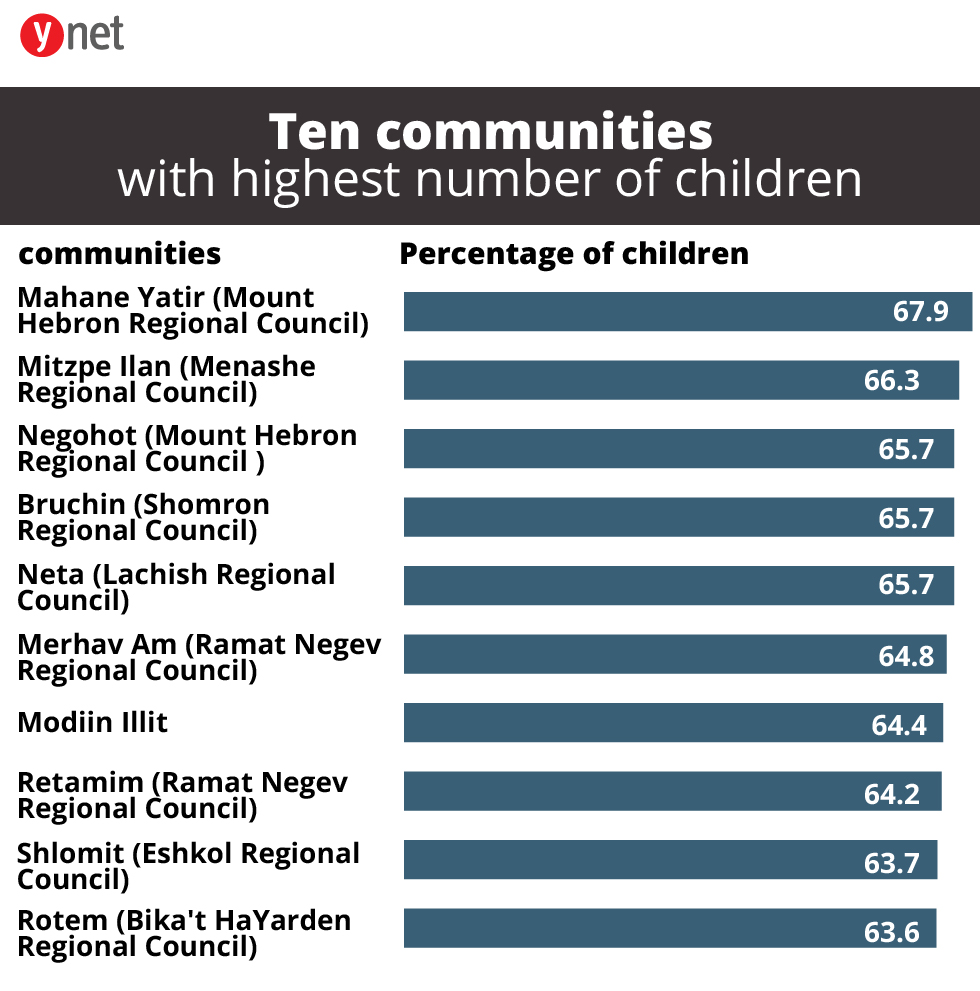
צילום: קרן נתנזון
Tel Aviv, an (almost) childless city
In honor of International children's Day, the Central Bureau of Statistics published a report about the children of Israel; Some 32% of the Jewish population is made up of children, and 40% of the Arab population; Some 64% of the residents of Modiin Illit are children while only 21% of the residents of Tel Aviv are;
In 2017, 2.908 million children between the ages of 0-17 lived in Israel, making up a third of the country's population, according to the Central Bureau of Statistics' report in honor of International children's Day, to take place on Tuesday.
In Israel of 2017, 72 percent of children were Jewish, 25% were Arab, and 3% were non-Arab Christians or people who have declared themselves without religion. Some 31% of Jewish society and 40% of Arab society are children.
In 2017, 183,648 children were born in Israel. The fertility rate stood at 3.11 children per woman, on average.
In the Arab sector, fertility rates have been dropping since 2000. In 2005 47% of Arab society was made up of children, while in 2010 it was only 44%. This is in line with the average number of children per woman: in 2000, an Arab woman had 4 children on average, while in 2010 it went down to 3.5 and in 2017 it was 3.16.
In Jerusalem, children made up 39.4% of the population, in Haifa they made up 23% and in Tel Aviv only 21%. The highest percentage of children in the population per region was documented in Judea and Samaria, where 48% of the Jewish residents were children—199 thousand.
In the Tel Aviv region, however, children made up only 27% of inhabitants.
In urban communities the percentage of children is lower than in rural communities (33% and 37%). Ultra-Orthodox Modiin Illit is the city with the highest percentage of children—64%—while Kiryat Yam has the lowest—21%.
Mahane Yatir in Mount Hebron is the rural settlement with the highest rate of children in the population—68%, while Ahva, in the Be'er Tuvia Regional Council has the lowest rate—only 4%.
In the cities with more than 100 thousand inhabitants, the highest percentage of children is in Beit Shemesh (52%), followed by Bnei Brak (47%) and Jerusalem (39%). In the other major cities the percentage is lower than the national rate, 33.33%. The lowest percentage was documented in Tel Aviv-Jaffa and Bat Yam and stood at 21%.
The number of children per household (in households with children under 17) is 2.46 on average. In Beit Shemesh the number was the highest in the country—3.61, while in Bnei Brak and Jerusalem the average numbers were 3.44 and 3.01 accordingly. In Ramat Gan the average was 1.89 children per household.
In Jewish families, only children made up 8% of all children, in comparison to 4% in Arab families. In families from the former Soviet Union the percentage is the highest—17%.
Some 92% of children lived with both their parents, and the rest, 216 thousand, lived with a single parent, usually the mother (88% of children).
In 2016, 628 girls under 17 were married in Israel, 89% of which were Muslim. Some 333 girls under 17 gave birth in 2017: 272 Muslim and 53 Jewish girls. For 8% of these girls, it wasn't their first child.
Out of 217 thousand teenage boys, aged 15-17, 92% attended school, 2% worked and didn't attend school and 6% did neither. Out of 205 thousand teenage girls of the same age, 94% attended school, 1% worked and didn't attend school and 5% did neither.
According to the Israel Police, 2,945 children 14 and under were hurt in car accidents in 2017. Some 28 were killed, 217 were severally injured, and 2,700 were lightly injured. This signified a 6% rise in comparison to 2016.
In the 2016-2017 school year, 75.65% of students who took exams were eligible for a high school certificate, in comparison to 74.7% in the previous school year. In the Hebrew speaking education system, 79.5% of students were eligible for the certificate, while in the Arab speaking schools 64% were eligible.
In the supervised general Hebrew speaking education system, 83.1% of students earned their high school diploma, while in the religious education system 83.7% of student earned theirs. In the supervised ultra-Orthodox education system, in which many schools don't offer a high school diploma, only 36% of students earned one.
In the Hebrew speaking education system 82% of girls earned a diploma in comparison to 77% of boys. In the Arab speaking education system the gap was bigger: 74% of girls and 54% of boys graduated with a diploma.
Data shows a child's odds to achieve a high school diploma rise in relation to his or hers mother's education level. Furthermore, it is evident that teenage boys are more likely to drop out between 7th-12th grade: the rate of teenage boys drop-outs stood at 3.5%, while the rate of girls was only 1.4%.
In the 2015-2016 school year, 9,924 teenagers, aged 12-18, committed crimes and were convicted. Some 92% of whom were teenage boys, whose rate of conviction was 11 times greater than that of girls.
Vocational school students were 10.6 times more likely to be convicted of crimes in comparison to students in the general education system, and 8.9 more likely than students in Yeshivot to be convicted. They were twice as likely to be convicted in comparison to teenagers who did not attend any school.
Some 80% of athletes between ages 7-17 were boys. Of which, 74% practiced group sports, with soccer, basketball, volleyball, and gymnastics and tennis being the most common.
According to data, households with children earned NIS 17,811 on average—1.3 times as much as households without children, earning an average of NIS 14,074.
Families with children spent NIS 15,527 per months, 1.5 times as much as households with no children, who spent NIS 10,563 per month.













